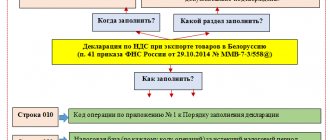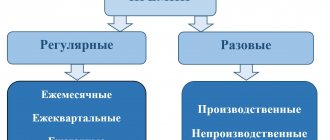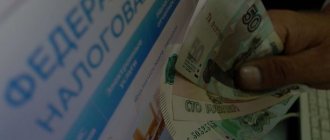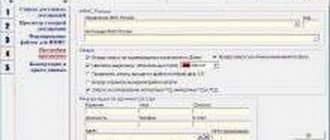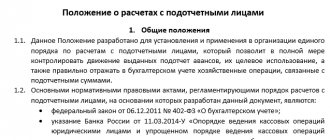Knp refund to the buyer
If you are not yet a user of the IS “PARAGRAPH”, then become one.
Become a user of the IS “PARAGRAPH” Why do you need the “Court Decisions Database”? see more details
Analysis of the information contained in the database will help the lawyer to foresee the consequences of his legal decisions and not bring the case to court.
Helps to build a competent litigation strategy based on the study and analysis of decisions already available in the database on similar cases.
Helps check the “purity” of partners and contractors:
- — did you take part in legal proceedings?
- - as who? (Plaintiff, defendant, third party, etc.)
- - on what matters?
- — did you win or lose?
The most complete database - more 7 000 000
documents
The database contains cases:
- — civil proceedings
- - administrative proceedings
- — criminal cases of open court proceedings
Simple and convenient search for documents:
- - by territory
- - by court
- - by date
- - type
- - by case number
- - on both sides
- - according to the judge
We have developed a special type of search - SEARCH BY CONTEXT
, which is used to search the text of court documents using specified words. All documents are grouped into
individual cases
, which saves time when studying a specific court case. Each case is attached with
an information card
that contains brief information on the case - number, date, court, judge, type of case, parties, history of the process, indicating the date and action taken.
If you are not yet a user of the IS “PARAGRAPH”, then become one. Become a user of IS "PARAGRAPH"
Why do you need the section “Responses from government agencies”? see more details
1. Responses of government bodies to specific questions from citizens and organizations in various sectors of activity. 2. Your practical source for applying the law. 3. The official position of government bodies in specific legal situations requiring decisions.
The section contains all the responses of government bodies, which are posted on the “Open Dialogue” portal of the Electronic Government of the Republic of Kazakhstan. Questions and answers are included in the IS “PARAGRAPH” unchanged in accordance with the original, which will allow you to refer to them when situations arise that require confirmation and justification of your position (when interacting with government agencies, among other things). Unlike the E-Government portal, the answers from government agencies in the PARAGRAPH IS section are equipped with additional search mechanisms that allow you to search by:
- - subject matter;
- - date;
- - auto RU;
- — question number;
and also conduct a full-scale contextual search in questions and answers - both individual words and phrases in the form of a phrase.
What is KNP?
The abbreviation KNP stands for desk tax audit. It is necessary to check compliance with laws on taxes and fees, which are based on regulations and other documents.
Simply put, KNI is a procedure for reconciling tax reporting of organizations, individual entrepreneurs and individuals. It begins to operate after submitting a tax return to the Federal Tax Service. This process is complex and must be carried out in accordance with the rules regulated by law.
CIT of individual entrepreneurs and organizations is carried out for a certain period covered by the declaration.
During the process, a tax inspector registers and analyzes reports and documentation of individuals to determine how correctly it is filled out. Providing accurate information affects the ability to obtain finance.
Desk and field inspections differ from each other. For example, the checkpoint does not require a decision from the head of the Federal Tax Service. The procedure begins upon delivery of the regulatory legal act. The taxpayer does not receive notification of the start. The frequency of such procedures depends on the frequency of submission of reporting documentation.
Notifying the bank about erroneous receipt of funds
A company that has received an erroneous payment must send a written notification to the bank within 10 days of receiving the bank account statement showing the excess funds. The form of such a written message to the bank is not established by law, therefore banks establish such forms with their own internal documents. If the bank does not have an approved form, the organization draws up a message in free form.
Bank, depending on the terms of the bank account agreement:
- if it is possible to write off erroneously credited amounts from the company’s bank account without acceptance, writes off the erroneously credited funds without a separate order from the organization;
- If there is no such possibility under the agreement between the bank and the organization, the erroneously transferred funds are written off only upon receipt of the corresponding order.
What are the results of the KNP
The result of the KNI can be issued in the form of an act, provided that a violation of the legislation on taxes and fees has been identified. The document is drawn up within ten working days after the completion of the KNI. All identified violations must be specified in the report. The taxpayer, if any disagreement arises, can send the document to the Federal Tax Service. The duration of the review will be one calendar month.
If the purpose of submitting a declaration by an individual or legal entity is to obtain a tax deduction, then the tax service makes a decision to return the overpaid amount of personal income tax or refuse.
Accounting and tax accounting of cash return transactions
In accounting, when returning funds, a posting is used that mirrors the one with which the funds were accepted for accounting:
- Dt 51 K 62 - cash receipt;
- Dt 62 Kt 51 - refund.
In tax accounting:
- simplified tax system: crediting funds is reflected in taxable income on the date of receipt of funds to the current account; upon return, taxable income is reversed by the date of return;
- BASIC: crediting and returning funds transferred by mistake is not reflected.
KNP return of erroneously transferred funds
The content of the article
Erroneously received amounts do not form the organization’s taxable income (clause 1 of Article 346.15 of the Tax Code of the Russian Federation). They do not relate to either sales income or non-sales income (Articles 249, 250 of the Tax Code of the Russian Federation).
These amounts are not recognized as the economic benefit of the organization (Article 41 of the Tax Code of the Russian Federation). In the ledger for accounting income and expenses, approved by order of the Ministry of Finance of Russia dated October 22, 2012 No. 135n, erroneously received amounts do not need to be reflected. A similar point of view is contained in letters from the Ministry of Finance of Russia dated November 7, 2006 No. 03-11-04/2/231 and the Federal Tax Service of Russia for Moscow dated December 16, 2004 No. 21-09/81715.
An organization can find out about the erroneous crediting of funds to a current account from a bank statement. At the same time, she must notify the servicing bank in writing about the erroneous crediting of funds to the current account. This must be done within ten days from the date of receipt of the extract. This is stated in paragraph 2.1 of Section II of Part III of the Rules approved by the Regulation of the Bank of Russia dated July 16, 2012 No. 385-P.
It is the date of receipt of the bank statement that is the moment when the organization should have learned about the erroneous crediting of funds to its account (clause 26 of the resolution of October 8, 1998 of the Plenum of the Supreme Court of the Russian Federation No. 13, Plenum of the Supreme Arbitration Court of the Russian Federation No. 14). Regardless of the method for determining the tax base for income tax, do not include erroneously received amounts in the taxable income of the organization (Art.
248 of the Tax Code of the Russian Federation). They do not relate to either sales income or non-sales income (Articles 249, 250 of the Tax Code of the Russian Federation). These amounts are not recognized as economic benefits of the organization (Art.
41 of the Tax Code of the Russian Federation). Such clarifications were given by the Russian Ministry of Finance in letter dated November 7, 2006 No. 03-11-04/2/231. This letter explains the procedure for reflecting erroneously received funds when calculating the simplified single tax. However, the conclusions set out in the letter are also applicable for the purposes of calculating income tax. Incorrectly received funds in accounting do not belong to the income of the organization.
This is due to the fact that in accounting income is recognized as an increase in the economic benefits of the organization (clause 2 of PBU 9/99). However, when erroneously transferred money arrives in the current account, its purpose is not determined.
They do not relate to income from ordinary activities or other income (clause 4 of PBU 9/99). The organization is obliged to return them, therefore such amounts cannot be recognized as income in accounting. In addition, in relation to these funds, the conditions for recognizing income given in section IV of PBU 9/99 are not met.
An exception to this rule is funds received, which the organization has the right not to return. Reflect them in accounting depending on the purpose of the funds received (advance payment, accounts receivable with an expired statute of limitations, etc.).
Responsibility for violation of the execution of a payment document
1. According to paragraph 180 of the Rules for making non-cash payments and (or) money transfers on the territory of the Republic of Kazakhstan, the bank is not liable for an erroneously executed payment document if the sender made an error in such a payment document.
Thus, it is impossible to return an already made erroneous payment in this case.
Incorrect indication of KNP in a payment order is a violation of the requirements established by the Rules for making non-cash payments and (or) money transfers on the territory of the Republic of Kazakhstan.
2. The Administrative Code of the Republic of Kazakhstan does not provide for administrative punishment to the sender for making an error in a payment order.
Recommendations for eliminating errors in the preparation of a payment document
To eliminate tax and legal risks, it is necessary to send the Customer an official letter of error notification.
The text of the letter may include the following:
“LLP “A” issued a payment order dated XX.XX.201X No. X for the return of funds for goods not provided in the amount of XXX tenge to the settlement account of LLP “B” KZXXXXXXXXXX, to JSC “Bank”, BIC XXXXXXX.
In the “Payment purpose code” field, KNP 859 was incorrectly indicated.
Please consider “Payment purpose code” 780 as correct.”
Please note that KNP 780 applies only to the return of funds for goods not provided. KNI for services not provided 880.
Read similar materials in the ES "ACTUALIS: Glavbukh"
The client mistakenly paid the same invoice twice (in 2011). The overpayment was recorded in account 3510 as an advance towards future services. A reconciliation report was signed. In 2012, the client sent a letter asking for a refund of the overpaid amount. How to properly issue a “payment”? What KNP, what wiring?
The document is available only to subscribers of the Accounting portal with the tariff: EXPERT, MASTER, PROF, ECONOMY, DEMO ACCESS
Log in using your electronic key (login, password)
The document is not shown in full. Subscribe
Payment destination codes are an important detail that allows you to reduce the amount of transferred information when making a wide variety of payments. This indicator includes several information at once that allows you to accurately identify the purpose of the payment being made and direct the funds to a specific account.
The rules for using KNP codes are enshrined in the legislative norms of the Republic of Kazakhstan. At the end of November 2021, some changes were made to the document, enshrined in Resolution of the National Bank of the Republic of Kazakhstan No. 302. The existing system makes it possible to increase unification by automating data processing and reduce labor costs when entering information into a payment order.
The table of payment purpose codes consists of the following blocks:
- pension payments – transferred contributions and paid benefits;
- transfers that have a specific purpose, for example, free of charge, for treatment, for education, etc.;
- foreign exchange transactions, as well as the purchase and sale of precious metals;
- long-term and short-term deposits and related operations - crediting interest, paying remuneration, etc.;
- issuance and repayment of loans;
- purchase and redemption of shares, bills, certificates of deposit that were issued by residents of other countries;
- acquisition and sale of securities issued by residents of the Republic of Kazakhstan;
- acquisition, repurchase, sale of goods of different categories and other intangible assets;
- payments, reimbursements, returns, remuneration for services;
- budget contributions and payments from it.
Each category has its own 3-digit numbering.
In 2021, changes that were approved at the end of last year came into force. In accordance with the adopted innovations, the KNP are applied:
- For payment forms filled out on paper or electronically. The rule applies to making payments and transferring funds;
- For interbank and intrabank money transfers or processing payments. Relevant both for operations within the country and for those carried out abroad.
Incoming payments must be independently classified with the appropriate code if the sender has not done so.
The changes introduced three new values into the table:
- 183 – single aggregate payment (SAP);
- 184 – return of erroneously credited ESP;
- 191 – instant payments and transfers.
Details for paying taxes and deductions from wages
Starting from 2021, in accordance with the new Tax Code, all entrepreneurs and enterprises are required to pay salary taxes and deductions on a monthly basis. In this regard, questions regarding the details for making these payments have recently become more frequent. For your convenience, all necessary details are provided below.
Individual income tax can be paid using the following details:
- Recipient bank - State Institution “Treasury Committee of the Ministry of Finance of the Republic of Kazakhstan”, Astana
- Recipient – State Revenue Office of the district of registration of the enterprise or individual entrepreneur
- BIN – Specify the UGD BIN
- IIK KZ24070105KSN0000000
- BIC KKMFKZ2A
- KBK for IP – 101202
- BCC per employee – 101201
- KNP 911 Accrued and other obligations to the budget
- KNP 912 Penalty for obligations to the budget
In general, the payment details for all taxes are the same. That is, when paying taxes, you always indicate the same recipient bank, current account (IIC), BIC, KNP. The only difference is the KBK. Below are the most popular BCCs for paying taxes:
- CIT - 101110 (Corporate income tax on legal entities - large businesses, with the exception of revenues from organizations in the oil sector)
- CIT - 101111 (Corporate income tax for legal entities, with the exception of revenues from large businesses and organizations in the oil sector)
- VAT — 105101
- Property tax for LLPs and individual entrepreneurs — 104101
- LLP transport tax — 104401
- Individual transport tax — 104402
- Unified land tax — 104501
In the BIN and Recipient , indicate the BIN and the name of the district tax office in which you are registered.
Social tax can be paid using the following details:
- Recipient bank - State Institution “Treasury Committee of the Ministry of Finance of the Republic of Kazakhstan”, Astana
- Recipient – State Revenue Office of the district of registration of the enterprise or individual entrepreneur
- BIN – Specify the UGD BIN
- IIK KZ24070105KSN0000000
- BIC KKMFKZ2A
- KBK 103101
- KNP 911 Accrued and other obligations to the budget
- KNP 912 Penalty for obligations to the budget
Mandatory pension contributions can be paid using the following details
- Recipient – NJSC “State Corporation “Government for Citizens”;
- BIN 160440007161
- IIK KZ12009NPS0413609816
- BIC GCVPKZ2A
- KBK 901101
- KNP 010 Mandatory pension contributions
- KNP 015 Mandatory professional pension contributions
- KNP 019 Penalty for late transfer of mandatory pension contributions
- KNP 009 Penalty for late payment of mandatory professional pension contributions
Social contributions can be paid using the following details:
- Recipient – NJSC “State Corporation “Government for Citizens”
- BIN 160440007161
- IIK KZ67009SS00368609110
- BIC GCVPKZ2A
- KBK 902101
- KNP 012 Social contributions
- KNP 017 Penalty for late transfer of social contributions
You can pay for compulsory medical social insurance using the following details:
- Recipient – NJSC “State Corporation “Government for Citizens”;
- BIN 160440007161
- IIK KZ92009MEDS368609103
- BIC GCVPKZ2A
- KBK 904101
- KNI for the employer 121 Contributions to compulsory social health insurance;
- KNP for individual entrepreneurs and individuals GPA with 122 Contributions to compulsory social health insurance;
123 — Penalty for late transfer of contributions to compulsory social health insurance;
124 — Penalty for late payment of contributions to compulsory social health insurance.

